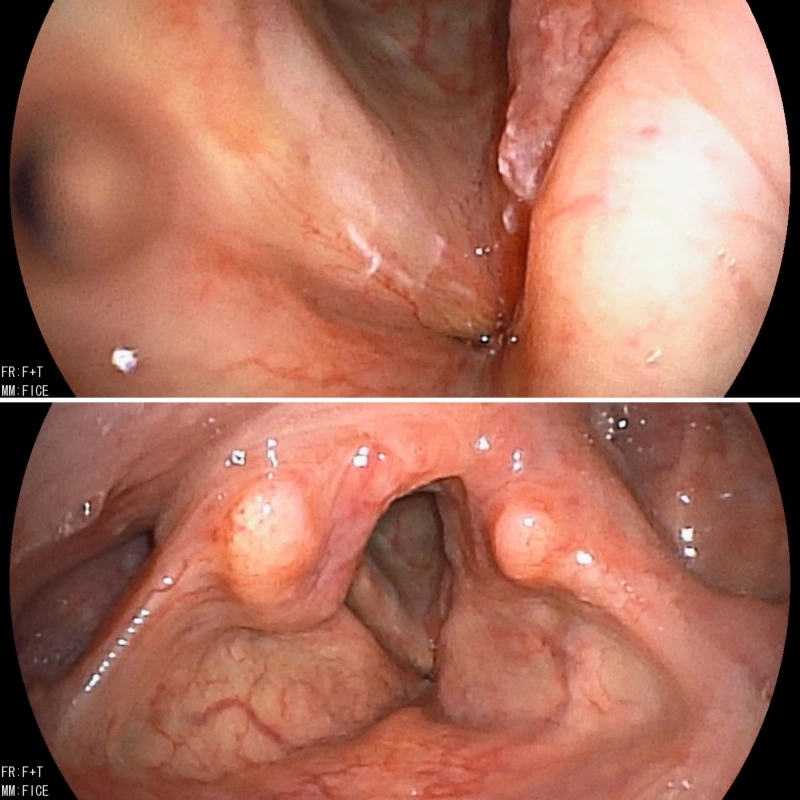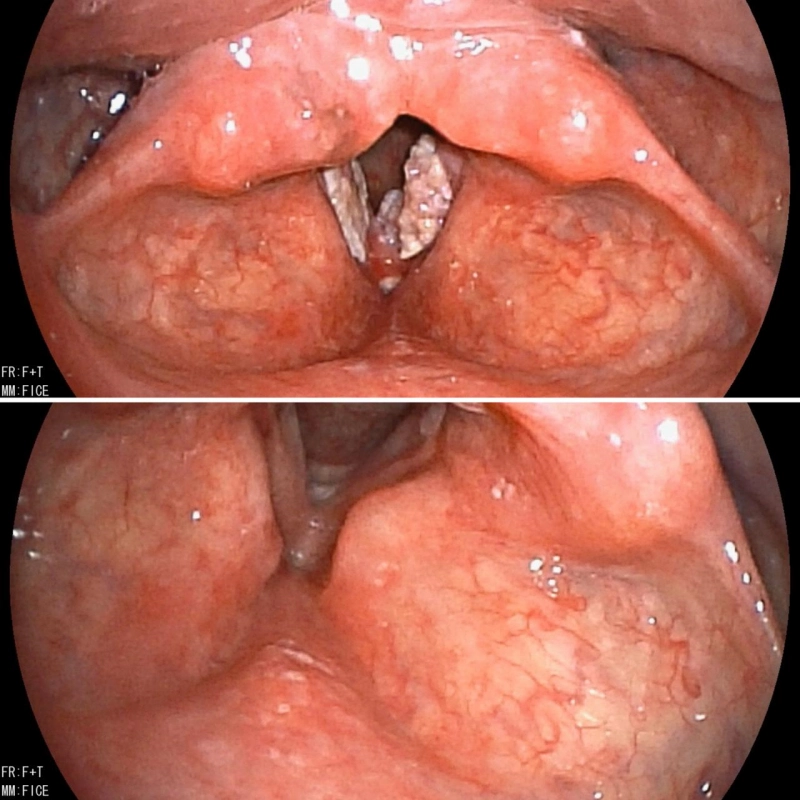What Is laryngeal cancer?
Laryngeal cancer, sometimes referred to as voice box cancer, is a subtype of throat cancer. The larynx can develop a variety of tumours, or masses.
What does the larynx do?
An organ in the front of the neck is called the larynx, or voice box. The muscles, ligaments, and hard cartilage that make up the larynx move to produce various noises and shield your lungs during swallowing. The term “Adam’s apple” refers to the cartilage that sits in front of the larynx.
When identifying the location of a malignancy within the larynx, clinicians may refer to one of the three regions of the larynx:
- Upper (supraglottis): The region between the voice cords at the top of the larynx and the epiglottis. The epiglottis is in charge of shielding the lungs during food and liquid swallowing.
- Middle (glottis): This section comprises the vocal cords that open during breathing and close during speaking and swallowing.
- Lower (subglottis): The region below the vocal cords where the larynx connects the trachea (or windpipe). The trachea connects the lungs and larynx. The hypopharynx is the horseshoe-shaped region that surrounds and behind the larynx. Food is sent into the oesophagus (or food pipe) by the hypopharynx. Together, the oesophagus, larynx, and hypopharynx ensure that food is swallowed into the stomach.


Why is the larynx used?
Three crucial functions of the larynx are as follows:
- Permits air to enter the lungs during breathing and produces sound so that you may speak and sing; also, the epiglottis flap, which closes the larynx when food or liquids are swallowed, cooperates with the vocal cords to prevent
- Possesses a flap (epiglottis) that closes the larynx during swallowing in conjunction with the vocal cords to stop food and liquids from entering the lungs.
- When you swallow, the voice chords and the epiglottis seal tightly, preventing food from passing into the windpipe.
- Laryngeal and hypopharyngeal malignancies can affect the laryngeal muscles and nerves, which govern the vocal cords and swallowing movement.
Why does laryngeal cancer occur?
A person’s cause of cancer is frequently unknown to doctors. However, we do know what increases the risk of various malignancies. Laryngeal cancer has two primary causes, which are:
Smoking: Smoking (cigars, pipes, or cigarettes) or using “smokeless” tobacco (chewing tobacco and snuff): A person’s chance of developing laryngeal cancer is higher than that of someone who has never smoked.
Alcohol consumption: Long-term heavy alcohol use increases the risk of laryngeal cancer, especially when paired with smoking.
Symptoms of Laryngeal Cancer
The location, size, and extent of the disease’s dissemination inside the body determine the signs and symptoms of laryngeal cancer.
Voice changes or hoarseness are the most prevalent early signs of laryngeal cancer.
Additional indications and manifestations include:
> Discomfort during swallowing, trouble swallowing, sore throat, or ear pain
> A lump in the throat caused by enlarged glands or lymph nodes
> Loud or breathing issues
Some laryngeal cancer patients can have no symptoms at all. However, you should consult your doctor as soon as possible if any of these symptoms persist for longer than a few weeks.
Tests for Laryngeal Cancer
It is crucial that your physician confirms the diagnosis of laryngeal cancer, evaluates the disease’s extent, and determines whether it has progressed to the body’s lymph nodes in the neck or elsewhere.
In order to request diagnostic testing, which may include scans, you should provide the following information: any indicators you may have seen, any health issues, drugs you are taking, and whether you smoke or consume alcohol.
Not every individual will require testing for laryngeal cancer. Appropriate tests for you will be recommended by your physician.
Typical tests include:
- Nasonendoscopy (Flexible Fiberoptic)
- Biopsy
- CT (Computed Tomography) Scan
- MRI (Magnetic Resonance Imaging) Scan
- PET (Positron Emission Tomography) Scan
Treatment
Your cancer care team will talk about treatment choices after a laryngeal cancer diagnosis, including the potential for you to take part in a clinical trial that is a good fit for you.
Several factors determine the best course of treatment for laryngeal cancer, including:
- The cancer’s size and location
- Whether the cancer has spread; individual characteristics (such as age, general health, and past medical history); accessible treatment options (including the availability of clinical trials).
- Your choices regarding care
Radiation Therapy
Radiation therapy and surgery are the two main types of treatment for laryngeal cancers. Concurrent chemotherapy refers to the use of chemotherapy and radiation therapy at the same time.
Laryngeal Cancer Surgery
When laryngeal cancer reaches an advanced stage, surgery is typically used. Your physician might think about employing a robot (transoral robotic surgery, or TORS) to remove the cancer. A head and neck cancer surgeon can conduct TORS, which is an intraoral procedure that doesn’t require any exterior incisions.
Radiation Treatment for Cancer of the Larynx
External beam radiation is the most widely used radiation therapy treatment for laryngeal cancer. External radiation is used in this kind of radiation therapy.
Chemotherapy for Laryngeal Cancer
Both the early and advanced stages of laryngeal chemotherapy for laryngeal cancer can benefit from radiation therapy.
Chemotherapy acts by causing harm or death to cancer cells. It is often injected into a vein using a needle that has a cannula (tube) connected in order to treat laryngeal cancer.
Chemotherapy acts by causing harm or death to cancer cells. It is often injected into a vein using a needle that has a cannula (tube) connected for hypopharyngeal cancer.
Chemotherapy can be applied in a variety of methods to treat hypopharyngeal cancer, such as:
Definitive
Chemoradiation, or chemotherapy plus radiation therapy, is sometimes used. Usually, advanced-stage hypopharyngeal malignancies are treated with it. This can be administered once every three weeks or once a week during the course of radiation treatment. Chemotherapy increases the effectiveness of radiation therapy in eliminating cancer cells, but most patients experience additional side effects as a result.
Adjuvant
This is the situation in which radiation therapy and chemotherapy are administered following surgery (chemoradiation). This can be administered every day that radiation therapy is administered, once every three weeks, or once a week. Chemotherapy increases the effectiveness of radiation therapy in eliminating cancer cells, but most patients experience additional side effects as a result.
Neo- Adjuvant
In order to assist decrease big malignancies and make them easier to remove during surgery or target with radiation therapy, chemotherapy is sometimes administered prior to radiation therapy or surgery.
Palliative
When cancer is incurable, this is employed. Surgery may not be an option because the cancer is too big or has spread too far. Palliative chemotherapy aids in symptom relief and slows the spread of cancer.
Your medical oncologist will select one or more chemotherapy drugs based on which ones are most appropriate for your particular type of cancer before you begin treatment.

